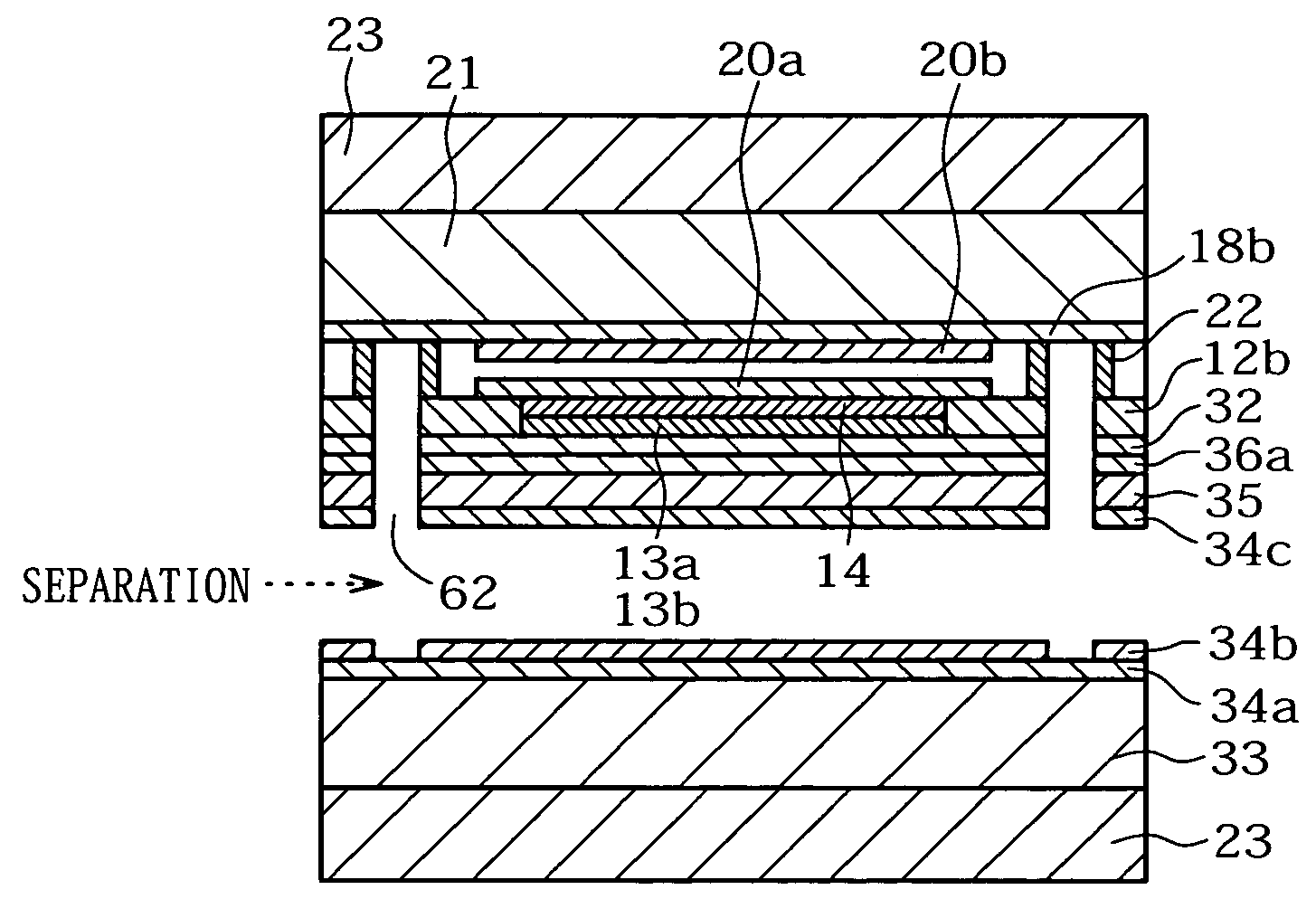Manufacturing process for ultra slim electrooptic display device unit
a manufacturing process and electrooptic technology, applied in the direction of optics, identification means, instruments, etc., can solve the problems of increasing manufacturing man-hours, easy to have problems with picture quality and reliability, and affecting the quality of the device, so as to achieve low electric current leakage qualities, high electron and positive hole mobility, and low cost
- Summary
- Abstract
- Description
- Claims
- Application Information
AI Technical Summary
Benefits of technology
Problems solved by technology
Method used
Image
Examples
Embodiment Construction
[0333]An execution form of the present invention will be described in detail below with reference to the accompanying diagrams for better understanding of the present invention.
[0334](A) A Method of Separating a Porous Semiconductor Layer
[0335](A-1) Ultra Slim Transmissive Type LCD
[0336]In this execution form, a method of producing an ultra slim electrooptic display by separation of a porous semiconductor layer using a porous silicon layer (hereafter referred to as “Si”) is described. FIG. 1 through FIG. 16 are process diagrams for manufacturing an ultra slim LCD by separation of a porous Si layer in the preferred execution form of the present invention.
[0337](1) Porous Si layers (11a: low porous Si layer, 11b: high porous Si layer, 11c: low porous Si layer) are formed by anodic oxidation on a monocrystalline Si substrate 10 as a support substrate.
[0338][1] Initially, p-type impurities are added in an approximately boron density of 1×1019 atoms / cm3 by a CVD method using monosilane g...
PUM
| Property | Measurement | Unit |
|---|---|---|
| insulating | aaaaa | aaaaa |
| semiconductor | aaaaa | aaaaa |
| depth | aaaaa | aaaaa |
Abstract
Description
Claims
Application Information
 Login to View More
Login to View More - R&D
- Intellectual Property
- Life Sciences
- Materials
- Tech Scout
- Unparalleled Data Quality
- Higher Quality Content
- 60% Fewer Hallucinations
Browse by: Latest US Patents, China's latest patents, Technical Efficacy Thesaurus, Application Domain, Technology Topic, Popular Technical Reports.
© 2025 PatSnap. All rights reserved.Legal|Privacy policy|Modern Slavery Act Transparency Statement|Sitemap|About US| Contact US: help@patsnap.com



